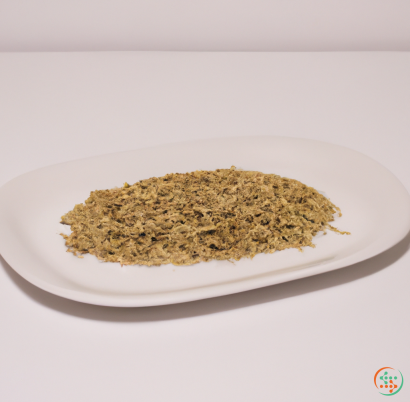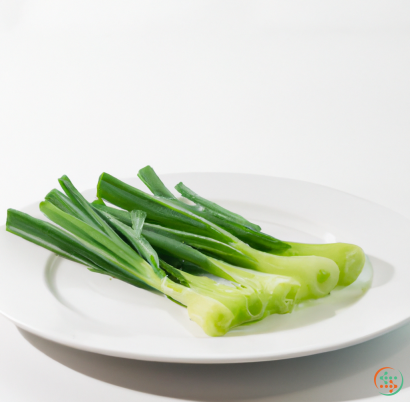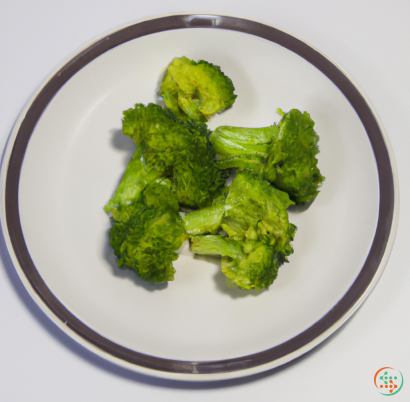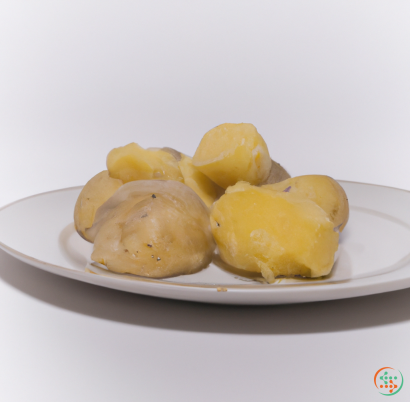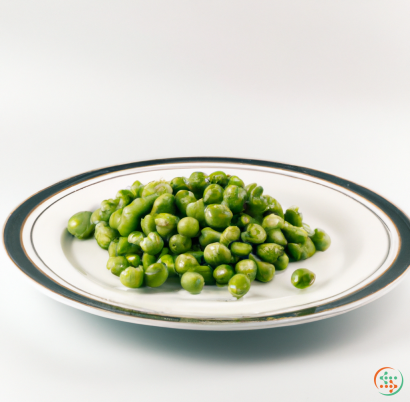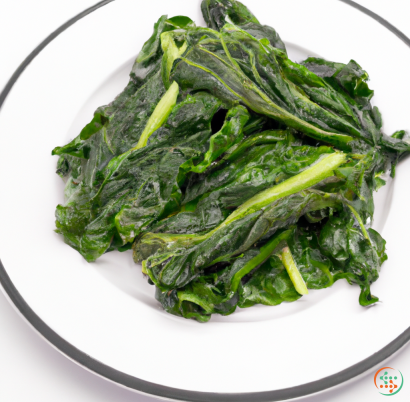Purslane
Purslane – A Nutritious Superfood with Abundant Health Benefits
Purslane (Portulaca oleracea) is an unassuming yet powerful green that has been popular in many cultures for centuries. Found in sunny patches in gardens, along roadsides, and in cracks of pathways, this mild, lemony flavored plant is often thought of as a pesky weed. But recently its healthful characteristics have been revealed—and they’re incredible!
Purslane is an exceptionally nutritious green; it contains a higher concentration of protein, calcium, magnesium, potassium, iron, and dietary fiber than most vegetables. It also contains vitamin E and the uncommon omega-3 fatty acid, alpha-linolenic acid (ALA). Not only does this nutrient-rich green play an essential role in supporting healthy organs and functions, but it may also help combat some chronic diseases.
From a nutritional standpoint, purslane contains roughly four times more vitamin A, E, and omega-3 fatty acids than most leafy greens. A single cup of the raw weed provides almost 20 percent of the recommended daily intake of vitamins A and E, along with an impressive amount of calcium and potassium, two vital minerals for maintaining optimal health.
Omega-3 fatty acids are essential for good health, and purslane is an excellent source. Omega-3s provide anti-inflammatory benefits and can help reduce risk of stroke, heart attack, and other cardiovascular issues, as well as helping to regulate and protect the cardiovascular system in general. The omega-3 ALA found in purslane may also be beneficial for cognitive function, healthy cell membranes, and reducing the risk of age-related mental decline.
In addition to its wealth of nutrients, purslane is also a great source of antioxidants, containing high levels of polyphenols, flavonoids, and other phytochemicals that work together to reduce inflammation, minimize the risk of certain diseases, and promote overall health. The high polyphenol count strengthens cell walls, protecting them against damage from environmental factors such as pollution and sunlight. Purslane also contains an enzyme called superoxide dismutase, which works to neutralize free radicals and thus protect cells from various diseases.
Antioxidants aren‘t the only thing purslane has to offer. The plant is also a great source of dietary fiber, with about 5 grams in a serving. Fiber helps promote healthy digestion and can support shift workers who expect irregular meal times. But that’s not all: Fiber can also prolong satiety, as it helps food pass through the digestive system at a slower rate. This means you’ll feel fuller for longer after consuming purslane, and it’s also suspected that dietary fiber may help reduce the risk of certain cancers and other chronic diseases.
Eating purslane is a great way to support the health of the body, but this powerful green has external benefits, too. Purslane has long been used to treat common skin ailments, such as sunburns and rashes. The plant's rich content of vitamin E, polyphenols, and fatty acids can help reduce redness, irritation, and swelling associated with skin irritation, making it an excellent choice for those with sensitive skin.
The humble, weedy purslane is a powerhouse of health benefits, making it a superfood that deserves a spot in kitchens everywhere. Add it to salads, smoothies, stir-fries and soups for a delicious and nutrition-packed boost. With its excellent nutritional profile and abundance of antioxidants and other beneficial compounds, purslane is an underappreciated and underrated superfood.
Purslane is a plant that is native to many parts of the world, but has been cultivated and eaten as a vegetable in many cultures for centuries. It is grown in gardens, yards and even windowsills of many homes. Purslane is a delicate leafy green vegetable with an unusual texture and flavor. It has seen a rise in popularity in recent years, as it has been used in a variety of dishes, such as salads, quiches, and frittatas.
This blog post will explain how a Purslane plant is created and care for, and how it travels to a dinner plate. To understand the journey of a Purslane, it is important to have an understanding of the planting, growing and harvesting process.
The Planting Process for Purslane
Purslane is related to the weed family of plants and prefers soil that is relatively loose and well drained. To plant Purslane, you should mix compost or manure into the soil, and use spent potting mix in larger pots. After mixing the compost and manure, you should plant the Purslane seeds or transplants in evenly spaced rows. Cover the seeds lightly with a small amount of compost, then water and wait for germination. If the soil is too wet, the seeds will rot.
Once the Purslane plants are sprouted and growing, they can produce a continuous harvest if they are kept well-watered, fertilized and weeded. When the plant begins to mature, the stems and leaves can be harvested. It is important to keep the plants healthy by weeding regularly and ensuring there is good airflow around them.
The Growing Process for Purslane
Purslane grows best in full sun and should be given at least six to eight hours of direct sunlight each day. The soil should be kept consistently moist, but not soggy or waterlogged. If soil is dry, water the plants deeply and only as needed. Mulch can also be used to help retain moisture and control weeds. Water crisis is one of the common problems faced by Purslane and it is important to follow the right watering schedules throughout the growing season.
Fertilize regularly with a balanced fertilizer once per month, or every few weeks. Apply a balanced fertilizer whenever the soil is dry and after each harvest. Overfertilizing can lead to leggy growth, which is why balanced fertilizers are important. Weed regularly, as Purslane competes easily with other weeds, so they need to be pulled up often.
The Harvesting Process for Purslane
Purslane is harvested at the young stages when leaves are small and tender. The leaves should be harvested when the plant reaches about six inches in height. The leaves should be trimmed from the plant near the base of the stem, taking care not to damage or break the stem or leave any unripe leaves.
The leaves can be harvested multiple times during the season. Each time, wait for the plant to re-grow to about four to six inches tall before harvesting again. The stems and leaves can be used fresh or frozen for future use.
The Journey of a Purslane to a Dinner Plate
The journey of a Purslane to a dinner plate starts when the seeds are planted. The Purslane seed is planted in soil that is nutrient rich and contains compost or manure. Once the Purslane seeds have been planted they will begin to sprout and grow, with proper care and maintenance. The Purslane plants need to be kept well-watered, fertilized, weeded and provided with adequate sunlight.
Harvesting of the Purslane plant begins when the plant is six inches tall. The leaves should be trimmed off at the base of the stem, taking care not to damage or break the stem or leave any unripe leaves. After harvesting, the stem and leaves can be used fresh or frozen for future use.
Once the Purslane is harvested it is ready to be prepared for a meal. Purslane can be used in a variety of dishes, such as salads, frittatas, quiches and more. It is best to prepare the Purslane immediately after harvesting, as this will ensure the best flavor and texture.
Purslane can be added to salads with other leafy greens, tomatoes and other vegetables. It can also be cooked and added to quiches and frittatas. Purslane can also be cooked and served as a side dish or added to soups and stews.
Finally, the Purslane is cooked and ready to be served on a dinner plate. This process includes planting, growing, and harvesting the Purslane plant, as well as preparing it for a meal.
Conclusion
Purslane is a delicate, leafy green vegetable that has been gaining popularity in recent years, due to its unique flavor and texture. Purslane is related to the weed family of plants and prefers soil that is loose and well-drained. The planting process involves mixing compost or manure into the soil and waiting for the seeds to germinate. Once the Purslane plants are growing, they must be watered and weeded regularly.
Harvesting Purslane takes place when the plant is six inches tall. The stem and leaves should be trimmed off the plant near the base of the stem and can be used fresh or frozen for future use. After harvesting, the Purslane can be prepared for a meal. Purslane can be used in a variety of dishes, such as salads, quiches, and frittatas. Finally, after all the necessary steps are taken, the Purslane is ready to be served on a dinner plate.
| Vitamin C | 0.021 grams | |
| Vitamin B1 | 0.05 mg | |
| Vitamin B2 | 0.11 mg | |
| Vitamin B3 | 0.48 mg | |
| Vitamin B4 | 0.0128 grams | |
| Vitamin B5 | 0.04 mg | |
| Vitamin B6 | 0.07 mg | |
| Vitamin B9 | 0.012 mg |
| Calcium | 0.065 grams |
Daily Value 1.3 g
|
| Iron | 0.00199 grams |
Daily Value 0.018 g
|
| Magnesium | 0.068 grams |
Daily Value 0.4 g
|
| Phosphorus | 0.044 grams |
Daily Value 1.25 g
|
| Potassium | 0.494 grams |
Daily Value 4.7 g
|
| Sodium | 0.045 grams |
Daily Value 2.3 g
|
| Zinc | 0.17 mg |
Daily Value 0.011 g
|
| Copper | 0.11 mg |
Daily Value 0.9 mg
|
| Manganese | 0.3 mg |
Daily Value 0.0023 g
|
| Selenium | 0.9 ug |
Daily Value 0.055 mg
|
| Total Sugars | 0.131141 grams |
per 100g
|

